If you like cooking, you must know how vital kitchen tools are to the outcome of a meal. They are just as crucial to the cooking process as the ingredients. A pan is a must-have cookware when cooking pizza.
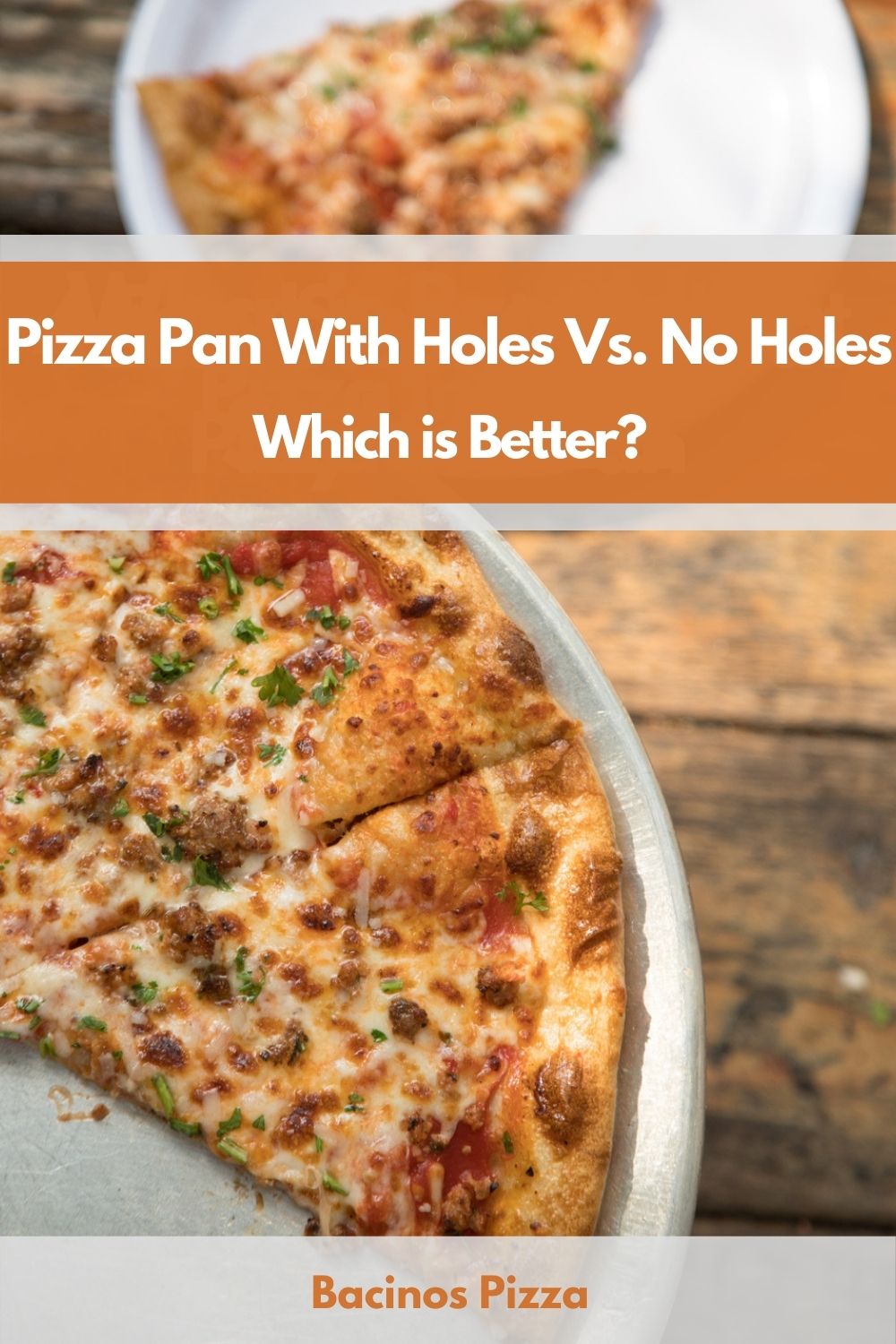
Pizza pan with holes vs. no holes, which one to use? Your choice will determine whether your pizza comes out crispy or soft and chewy. In this post, we will take a comprehensive look into pans with and without holes and how they affect the outcome of your pizza.
Pizza Pan With Holes
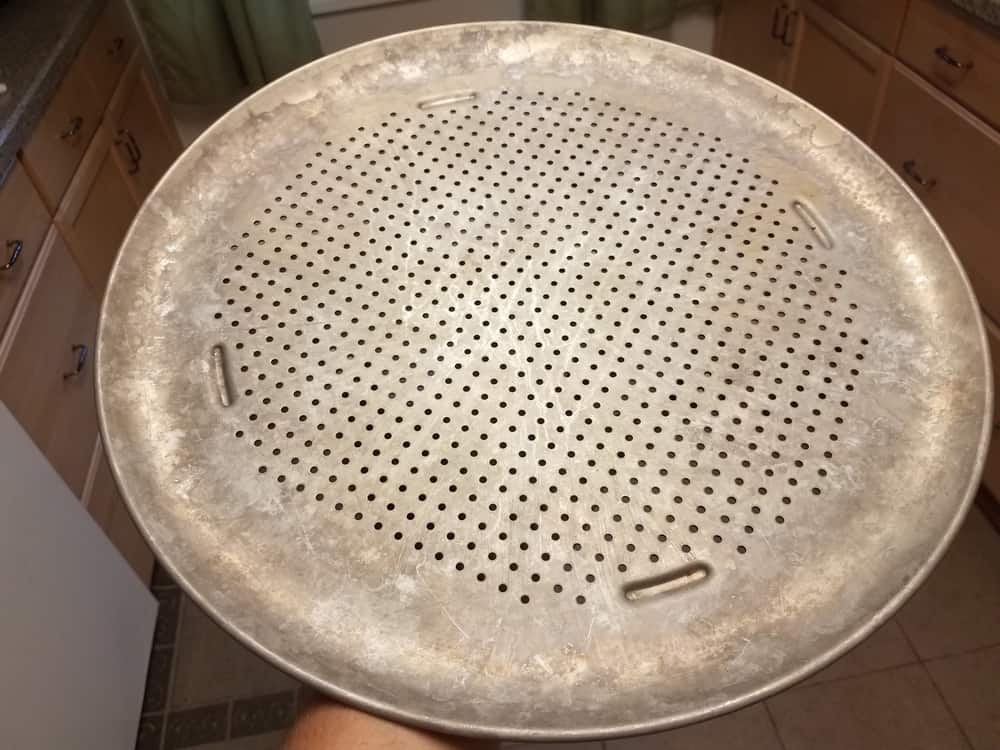
A pizza pan with holes is also referred to as a perforated pan. It is mainly made of aluminum and is easily distinguishable by the holes at the bottom. These holes cause heat to move directly to the base of your pizza hence cooking faster.
When you use a pan with holes to cook pizza, your crust is sure to become crispy. It allows air into the pizza while hastening the cooking process. On top of a crunchy crust, it also minimizes the overall calories compared to a deep-dish crust.
A perforated pan is meant to reduce moisture and allow the heat to work directly on your pizza base. It is also important to note that this kind of pan is not as effective when cooking thick-crust pizzas. It makes a thin-crust pizza less chewy, more crispy and does not interfere with the overall taste.
Some of you may be wondering, how do I add oil to a pizza pan with holes in the base? You can simply use your cooking brush to rub the oil on the pan’s surface. During this process, hold your pan over the sink to avoid having oil drops on the floor.
Pros
- It reduces the moisture in the pan to give you a crusty pizza.
- The uniform holes allow heat to circulate in every part of the pizza and quicken the cooking process.
- The holes allow the pizza to cook evenly.
- Perforated pizza pans are mostly made using aluminum which makes them durable.
- Suitable for reheating pizza leftovers
Cons
- You need to monitor your pizza carefully when cooking to avoid burning.
- It is not flexible for other baking options
- Cleaning is tedious unless it is a non-stick pan
Pizza Pan Without Holes
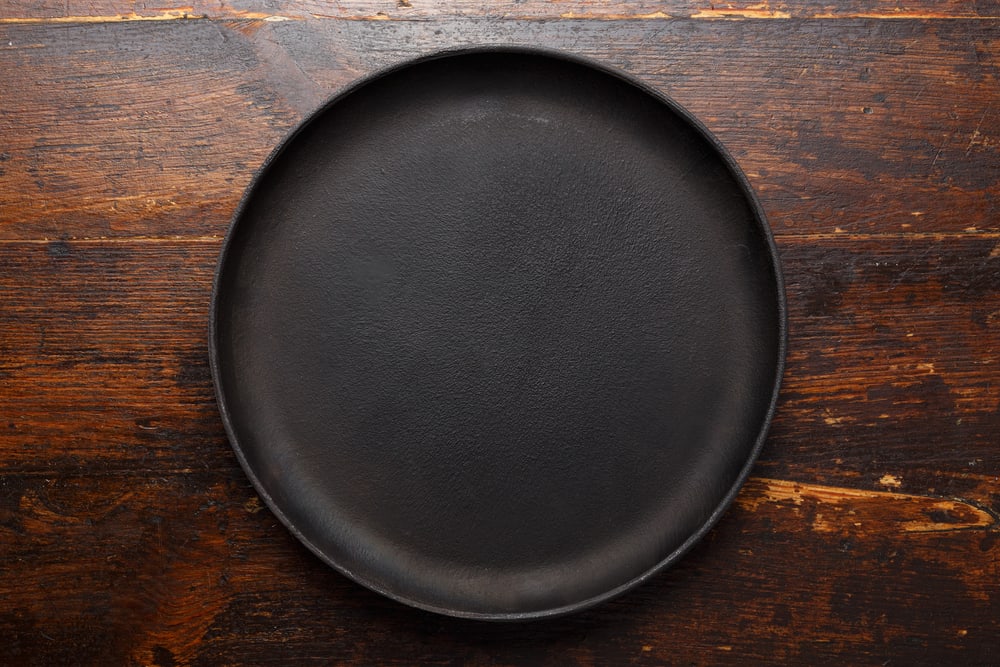
If you are a fan of soft, chewy pizza, a pan without holes is the best option for you. It does not allow the free flow of air and loss of moisture, thereby providing you with soggy centers. The excess moisture causes your pizza crust to be softer and less crispy.
This pan also has a thick base which takes longer to absorb and build up heat. Therefore, the cooking process takes more time compared to when cooking with a pan with holes.
When using a pan without holes, the pizza toppings mainly come out as unevenly cooked. You can give your pizza adequate time for the heat to transfer to the top. However, too much heat at the bottom may end up burning your pizza crust.
Pros
- It is versatile and can be used to cook pies, cakes, roasts, and other various baking alternatives.
- It is easy to clean.
- A perfect tool for lovers of a soft, chewy pizza.
- You can easily regulate your cooking
Cons
- Slow cooking since it takes longer to distribute heat
- It does not provide a crispy crust
Pizza Screens: Alternative to Perforated Pizza Pans
A pizza screen is an aluminum mesh with a flat round surface. It works in an almost similar way to a pizza pan with holes, allowing complete hot air circulation. Pizza screens differ, with some having bigger holes than others.
Pizza screens are an efficient way to ensure heat reaches the top part of your pizza. They allow quick transfer of heat and cook your pizza in a shorter time than a perforated pan.
The main downside to pizza screens is that there is a high possibility of your pizza getting burnt at the bottom of the crust. The aluminum metal surface may concentrate a lot of heat underneath.
Pizza pan with holes vs. no holes: The Main Differences
Surface
The names already suggest the main difference between these two pans. One has perforated holes while the other doesn’t. The holes allow you to get a nice brown and crispy pizza. It also ensures your pizza cooks uniformly and adequately.
A pizza pan without holes cooks your pizza similarly to a cake. It remains mushy and chewy and may not be evenly cooked.
Material
The uniform perforated layers in pans with holes collect heat and distribute it faster to your pizza. They are made using aluminum, which is a quick heat conductor. It is also durable and long-lasting. Even with thick layers, perforated pans can still cook at high speed.
Pans without holes are mainly made of thick materials. It makes them slow in cooking because they take longer to distribute heat.
Maintenance and Cleaning
Every kitchen utensil needs a thorough wash after use. A perforated may consume more of your time to remove the crumbs stuck on the surface. The perforated holes also require extreme attention to ensure that each is clean before storage.
A pizza pan without holes is easy to clean. You can simply use your dishwasher or a less effortless approach in your sink. Pan cleaning is even much easier when you go for a non-stick type.
Baking Time
Due to the even holes, a perforated pan allows the quicker transfer of heat hence less cooking time. You will also need to keep an eye on your pizza to avoid getting a burnt crust.
Most pizza pans with no holes have a thick surface. It takes longer for the heat to be evenly distributed across the entire surface and even longer for it to reach the top of your pizza.
Flexibility
A perforated pan is restricting and can not be used for other types of baking. It is ideal for preparing a thin-crust pizza. It is also suitable for steaming vegetables. The holes allow even cooking from all directions resulting in higher quality food.
However, a pan without holes is one of the handiest tools in the kitchen. It is a flexible alternative for many other baking requirements. You can also cut your pizza while still in the pan due to the flat and solid base.
Factors to Consider When Choosing a Pizza Pan
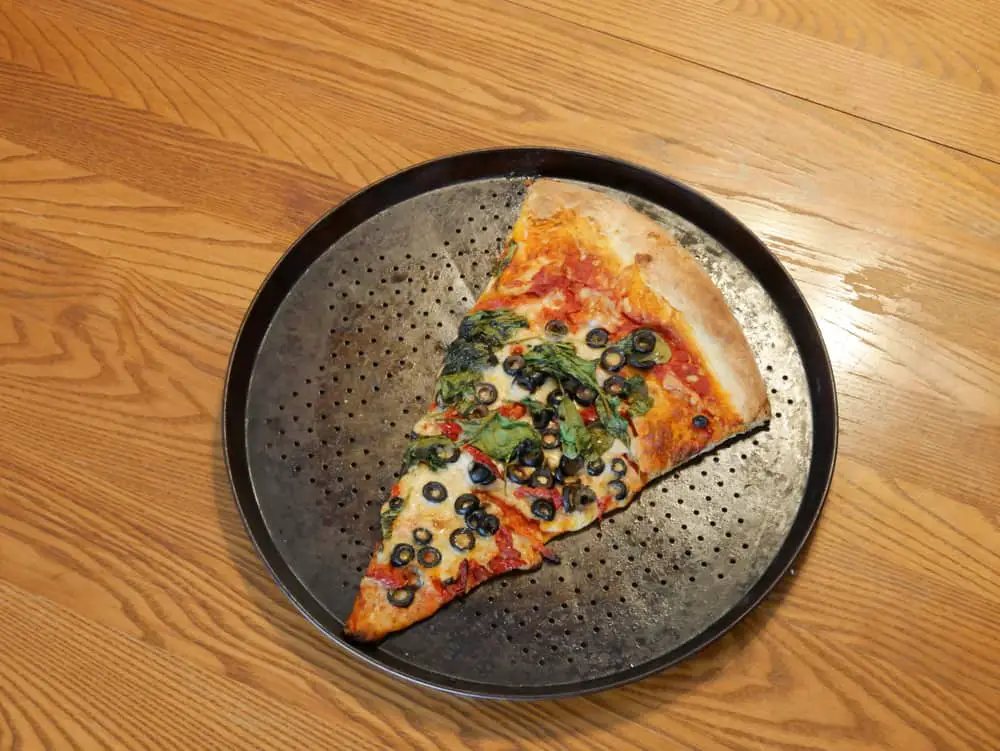
I love making pizza at home. It has become more accessible due to the availability of different kinds of pans that produce distinct types of pizzas. The perforated pan is one of my best choices since I like my pizza crust all crispy.
I always go for dark metal pans because they absorb more heat compared to shiny ones. It is also best to go for a pan with a thick surface to avoid warping under high temperatures. When buying a pizza pan, there are several factors you need to consider:
Type of Material
As I mentioned earlier, the type of material used to make a pan determines how much time your cooking will take. Different materials also result in different results.
For example, pizza pans are mainly made using cast iron or stainless steel. A stainless steel pan requires little to no maintenance. However, it is likely to produce more burnt pizzas due to the high rate of heat conduction.
On the flip side, cast iron pans require regular seasoning to retain the non-stick feature. They are highly durable, easy to wash and reduce the likelihood of getting a burnt pizza.
Edges
The edges depend on what you like. If you are more into deep-dish pizza, a pan with edges can cook a pizza with a stuffed crust.
Handles
An efficient pizza pan needs strong handles. Assume you want to remove your pizza from the oven and the handle on one side snaps; all you get from your baking is a delicious mess on the floor. It is preferable to get a pizza pan with sturdy aluminum handles.
Which is the Best Pizza Pan? With or Without Holes
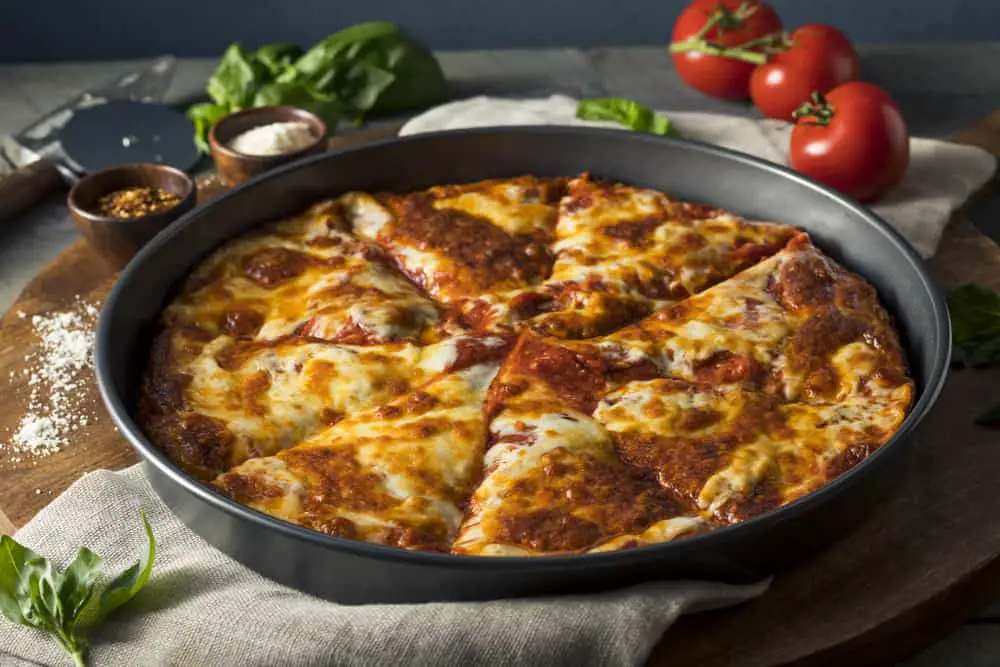
Pizza has become a must-have dish for many of us. When preparing one for you, your family, or customers, it is essential to get the right taste and texture. Your result will depend on your style of cooking, preparation, and the cookware you use.
Most of us love our pizza crust crunchy. You can achieve this by using a perforated pan. It ensures that your pizza is evenly cooked and develops a brown color. Moreover, it also takes less time in the oven due to the tremendous rate of heat distribution.
On the other hand, a pan without holes takes more time for the heat to reach all the parts of the pizza. As a result, some sections may be unevenly cooked. The pizza also turns out to be soft and chewy.
The choice for which pan to choose entirely depends on your individual preference. If you are not ready to scrub every crumb from the holes in a perforated pan, then you can stick to a chewy pizza.
It is also important to note that a perforated pan takes less time to cook. A slight error in timing and your pizza is burnt. A pizza pan with no holes takes longer and is unlikely to give you a burnt result.
Wrapping Up
Most homeowners prefer having a pan with no holes because it is flexible and can adapt to other baking needs. It wouldn’t hurt you to have one perforated pan in the house strictly for pizza or vegetable steaming.
You can try cooking pizza on the two pans to find out which gives you the pizza you want.
Do you have any questions, concerns, or recommendations? I would love to hear them in the comment section below!
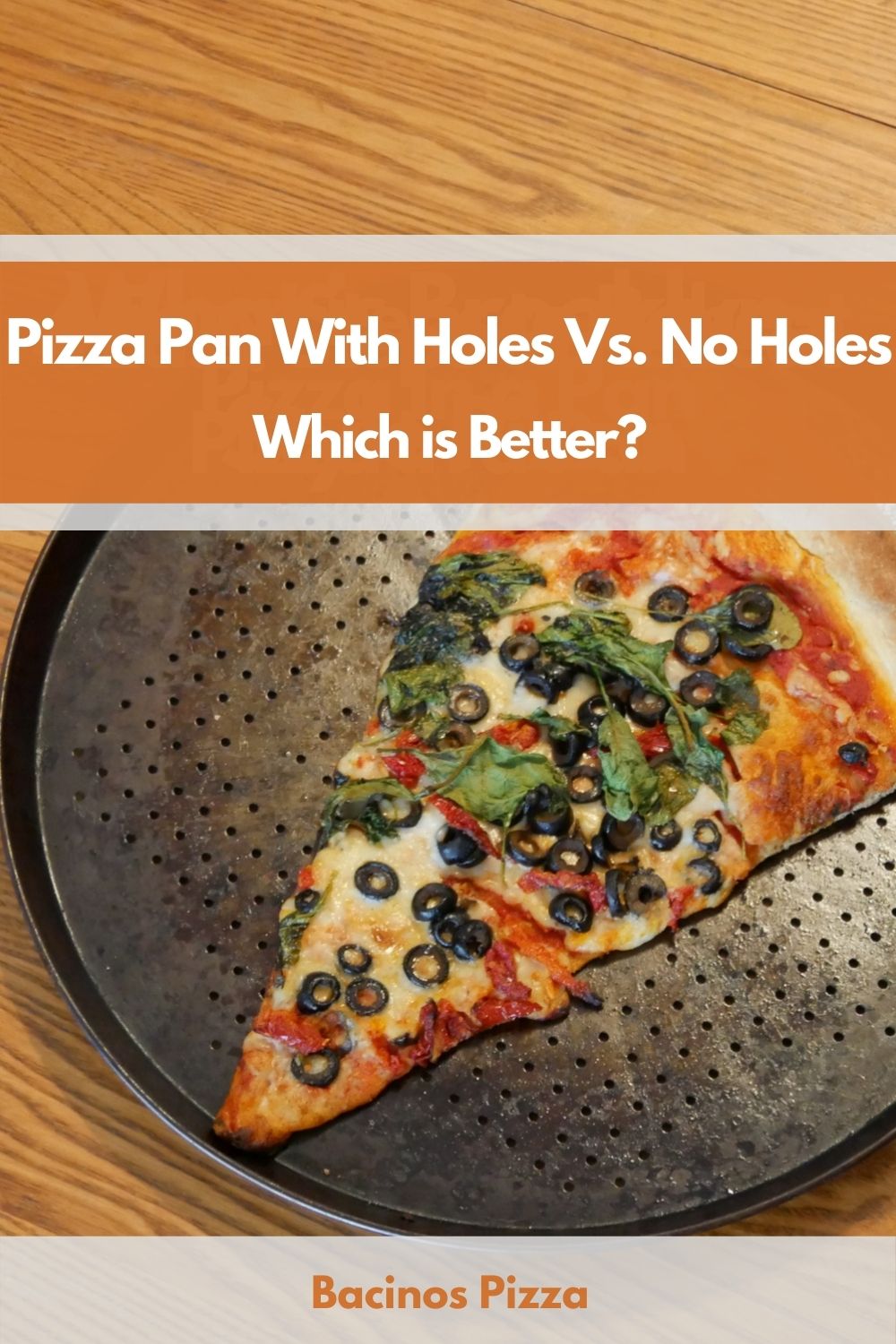

Barbara is an enthusiastic food-exploring person that goes through different culinary experiences. She got inspired by creating a pizza blog post after she tasted one of the best-selling pizzas in Toledo.